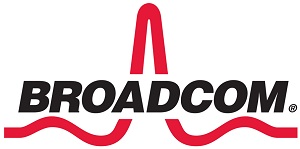C-DOCSIS Gains Some Steam

C-DOCSIS, a modification of cable’s IP platform that was originally developed for China’s high-density multi-dwelling unit (MDU) environment, has made some strides this year and is on the cusp of reaching a deployment milestone, according to Broadcom, the chipmaker that is championing the technology.
The C-DOCSIS network footprint, comprised of deployments of a device called the Coax Media Converter (CMC), will be capable of serving about 1 million modems by the end of 2013, predicts Ernie Bahm, the senior director of product marketing for Broadcom’s Broadband Communications Group.
“Step one is getting the footprint out there, and then working on the attachment rate,” he said. “We’re forecasting significant growth next year.”
According to Broadcom, a handful of China-based operators have already adopted C-DOCSIS during this early deployment phase, including Guangzhou Digital Media, Cable Networks of Inner Mongolia, Guangxi, and Shanxi Province, as well as Nanjing City and Kunshan City of Jiangsu Province. China’s State Administration of Radio, Film and Television (SARFT) has accepted C-DOCSIS as an access standard for the country’s next-generation broadband project aimed at sparking more competition for the nation’s telcos. SARFT has also stamped two other Ethernet-over-coax technologies: HiNOC (High Performance Network Over Coax) and C-HomePlug.
Although China currently represents about 95% of Broadcom’s C-DOCSIS deployments, the company is also seeing interest in the technology from operators in other regions, including in Northern Europe, where municipal providers are pulling fiber closer to apartment buildings, as well as from the hospitality services sector, Bahm said.
That fits well with the fiber deep C-DOCSIS architecture, which relies on the CMC, a stripped-down, router-less version of a cable modem termination system (CMTS) that can work with traditional DOCSIS 2.0- and DOCSIS 3.0-certified cable modems.
CableLabs integrated C-DOCSIS earlier this year. That development, Bahm said, “has lowered the headwinds” from cable operators in other regions of the world because CableLabs’ involvement ensures that that C-DOCSIS-based products from multiple vendors will be interoperable. Early on, a handful of China-based vendors have tossed their hats into the C-DOCSIS ring, including SumaVision, Huawei, LanCable and ZTE.
Multichannel Newsletter
The smarter way to stay on top of the multichannel video marketplace. Sign up below.
“It’s been a very positive event,” Bahm said of CableLabs’ recent involvement with C-DOCSIS. “It has increased the interest in this technology from operators outside of China,” he said.
Broadcom, meanwhile, has developed new C-DOCSIS chips for CMCs that can address a broader segment of the market.
Its flagship C-DOCSIS silicon for the CMC, the BMC3218, was engineered to support about 200 users. Its newest chipset, the BMC3227, can support a lower range of about 50 users. The new silicon is also optimized for compatibility with the company’s cable modem, set-top box, and 10G EPON Optical Line Terminal and GPON products, according to Broadcom.
“It turns out that there are a lot of service groups [in China] that are smaller than 200,” Bahm said, noting that the new chip “will help expand the C-DOCSIS footprint in China.”
It will also give Broadcom a weapon to wield against other Ethernet-over-coax technologies being used in China, such as C-HomePlug, whose “sweet spot” tends to be MDUs with about 50 apartments, he added.
